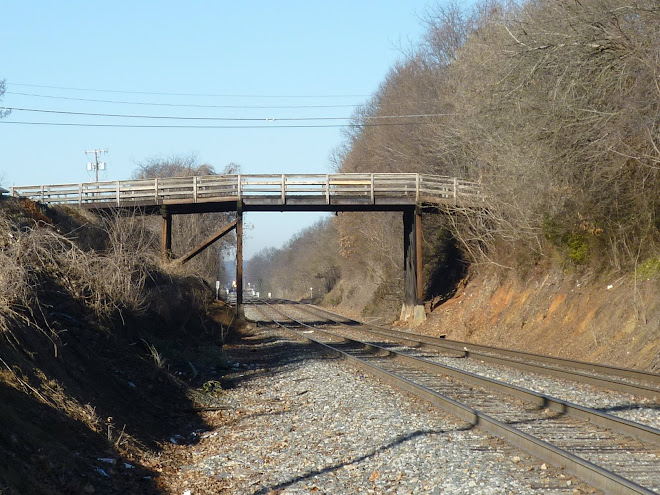The historic Shober Bridge in Salisbury North Carolina, also known as the Ellis Street Bridge, predates the Civil War and is a local landmark in the Ellis Street Graded School District. The Shober Bridge is best known as the bridge across which General George Stoneman led his Union troops to occupy Salisbury in 1865.
The Shober Bridge is fairly unique in structure. A "humpback" or "camel-back" bridge, the 100-foot-long, single-span structure is four feet higher at its center than it is at either end, giving it a rounded or 'humpback' appearance. The Shober Bridge's earliest history is long buried or forgotten, however bridges of this style were built in the 1820's and were often covered. The Shober Bridge has no evidence of ever having been a covered bridge. The Shober Bridge is one of the few overpasses over the railway system in Salisbury. It is situated in the heart of one of Salisbury's 10 National Historic Districts, the Ellis Street Graded School District, where it is cited as a contributing structure on the National Registry of Historic Places.
Shober Bridge is constructed of large round wooden posts and a plank deck in three sections. There are two angled approaches and a flat span across the tracks. The bridge is constructed with wooden girders that rest atop the trestles from the two approaches and I-beams support the flat span. The supports for the trestles and the abutments are concrete. The sidewalks have wooden railings on both sides,facilitating pedestrian traffic over the railroad tracks and through the neighborhood. Based on construction and materials, the current Shober Bridge configuration appears to date from the 1932 - 1944 period. (United States Department of the Interior, National Parks Service, National Register of Historic Places, Ellis Street Graded School Historic District, Rowan County, North Carolina)
Shober Bridge is constructed of large round wooden posts and a plank deck in three sections. There are two angled approaches and a flat span across the tracks. The bridge is constructed with wooden girders that rest atop the trestles from the two approaches and I-beams support the flat span. The supports for the trestles and the abutments are concrete. The sidewalks have wooden railings on both sides,facilitating pedestrian traffic over the railroad tracks and through the neighborhood. Based on construction and materials, the current Shober Bridge configuration appears to date from the 1932 - 1944 period. (United States Department of the Interior, National Parks Service, National Register of Historic Places, Ellis Street Graded School Historic District, Rowan County, North Carolina)






I like your writing style. Nice blog.
ReplyDelete